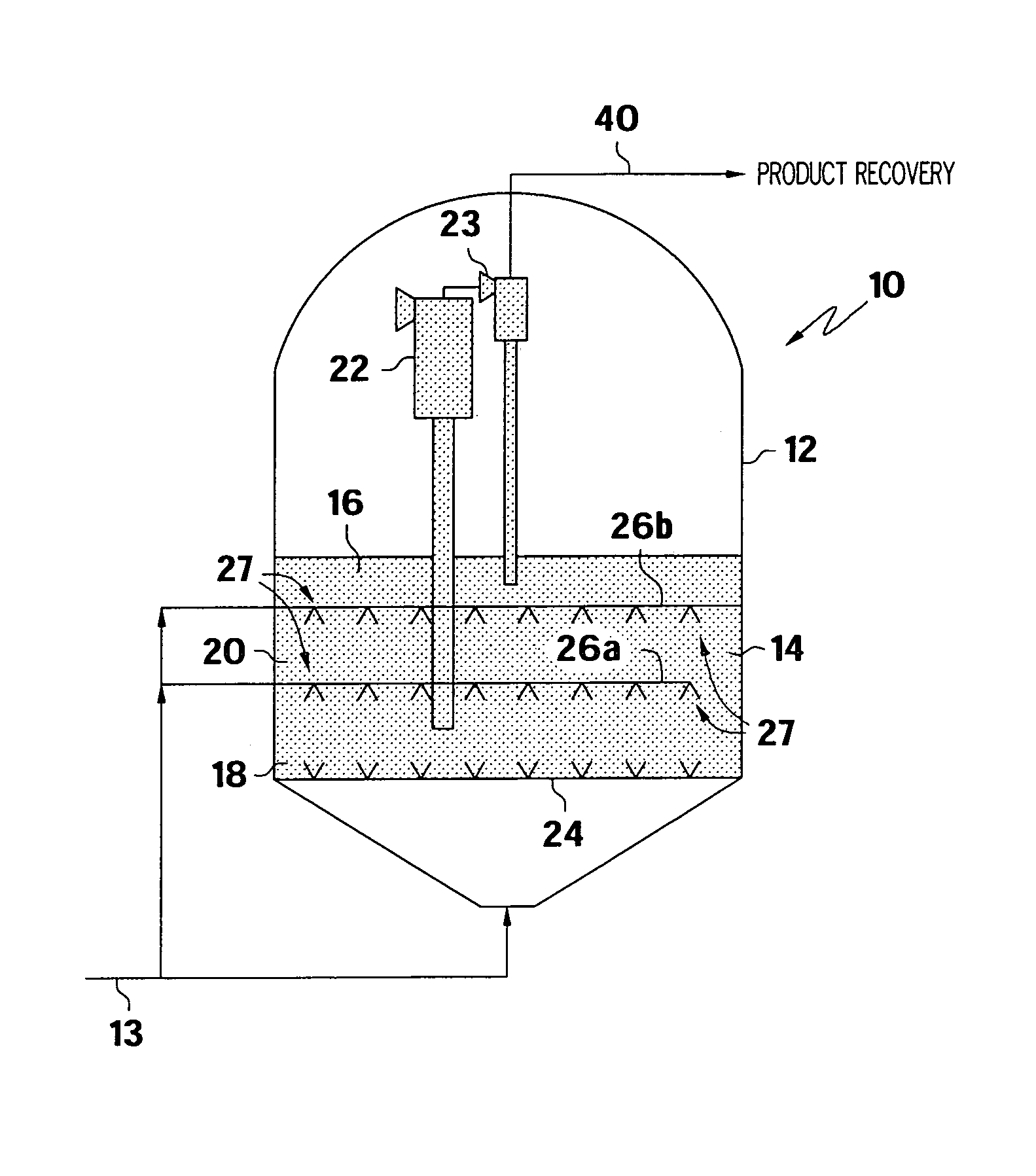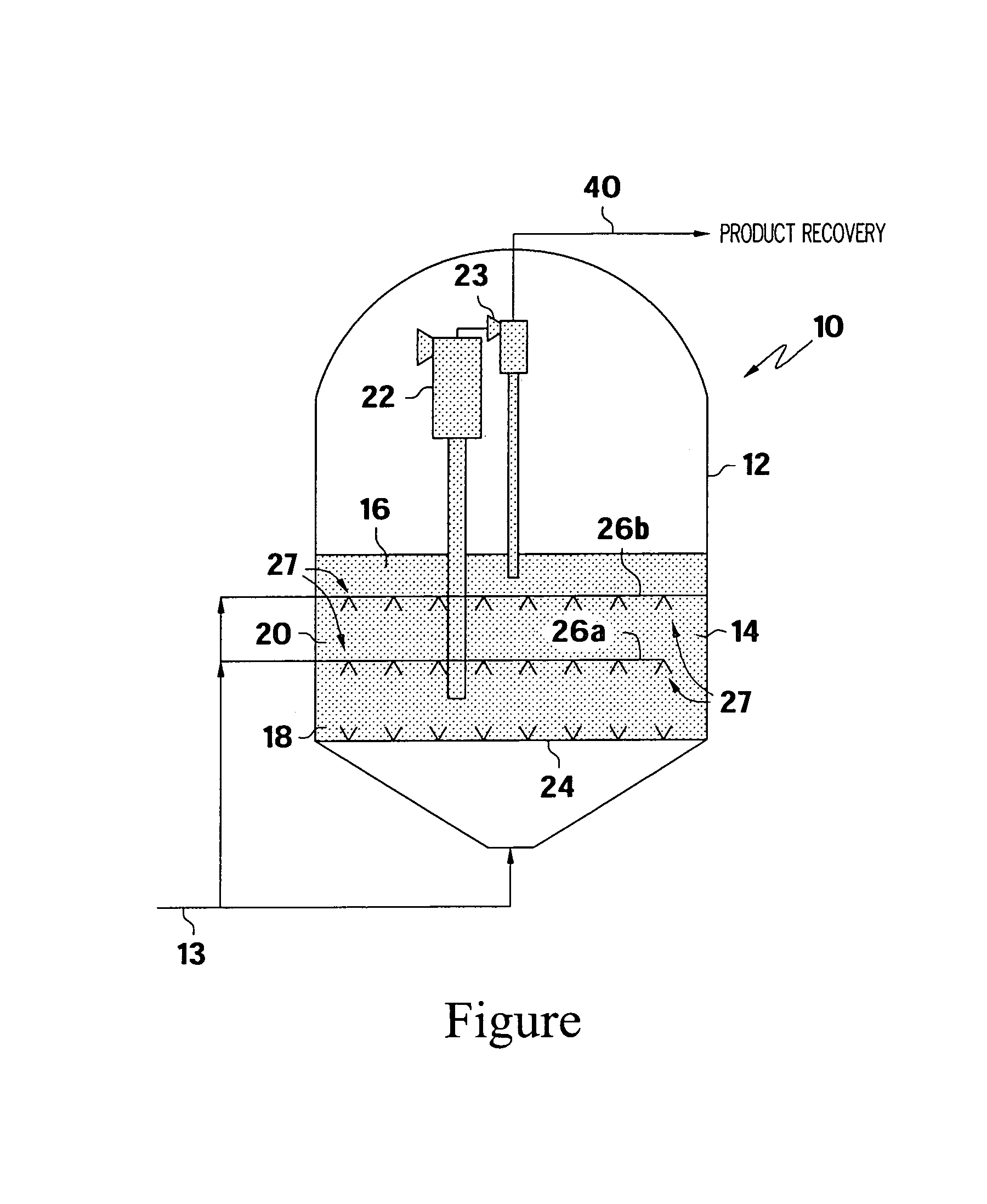Conversion of oxygenate to olefins with staged injection of oxygenate
a technology of oxygenate and olefins, which is applied in the direction of organic chemistry, hydrocarbon preparation catalysts, chemical instruments and processes, etc., can solve the problems of reducing the total olefin production, diluent addition entails significant expense, and the general negation of expenses by using diluents in significant quantities, so as to achieve high conversion and selectivity and less expense
- Summary
- Abstract
- Description
- Claims
- Application Information
AI Technical Summary
Benefits of technology
Problems solved by technology
Method used
Image
Examples
example 1
[0052]Catalytic tests were carried out with 15 g catalyst in a small fluid-bed reactor at atmospheric pressure, 375–470° C. and methanol WHSVs of 0.15–0.7 g methanol / g cat-hr. Water was used as the diluent. Pure methanol feed was used except when diluent was present. Two catalysts were tested: ZSM-34 and SAPO-34. The ZSM-34 catalyst was bound with a silica binder and steamed for 6 hrs at 538° C. with 1 atm steam. The SAPO-34 catalyst was bound in a silica-alumina matrix and steamed for 8 hrs at 538° C. with 1 atm steam. Test results are summarized in Table 1.
[0053]As shown, both catalysts were very efficient in converting methanol to a hydrocarbon product rich in light olefins. Also, water diluent had a beneficial effect on improving the conversion of methanol to ethylene. The effect of diluent appears more pronounced with the SAPO-34 catalyst.
[0054]
TABLE 1Catalytic Test Data: Methanol to Light OlefinsWater Diluent,wt. % of FeedCatalystYields, Wt. %ZSM-34SAPO-34of Methanol070070Meth...
example 2
[0061]In a toluene alkylation process, a feed of 1.8–2.0 toluene to methanol molar ratio was reacted over a phosphorus-modified ZSM-5 at 0.25 overall methanol WHSV to produce p-xylene. Multiple injection of methanol is used to improve p-xylene yield and methanol utilization. Some of the methanol reacts to form olefins. The pertinent data were examined to determine if there was improvement in ethylene selectivity with the number of methanol injectors. The results in Table 4 indicate a positive effect of multiple injection on ethylene selectivity in this process. Again, no injectors means the feed enters the reactor through the bottom grid. The results are consistent with ethylene selectivity improvements with feed dilution in methanol conversion to light olefins over ZSM-5 catalyst. The catalyst activity referred to in Table 4 is for the reaction of toluene with methanol.
[0062]
TABLE 4Ethylene Selectivity in Toluene Alkylation Over ZSM-5Rel. Apparent Catalyst Activity12.8No. of Methan...
PUM
| Property | Measurement | Unit |
|---|---|---|
| pore size | aaaaa | aaaaa |
| pore size | aaaaa | aaaaa |
| pore size | aaaaa | aaaaa |
Abstract
Description
Claims
Application Information
 Login to View More
Login to View More - R&D
- Intellectual Property
- Life Sciences
- Materials
- Tech Scout
- Unparalleled Data Quality
- Higher Quality Content
- 60% Fewer Hallucinations
Browse by: Latest US Patents, China's latest patents, Technical Efficacy Thesaurus, Application Domain, Technology Topic, Popular Technical Reports.
© 2025 PatSnap. All rights reserved.Legal|Privacy policy|Modern Slavery Act Transparency Statement|Sitemap|About US| Contact US: help@patsnap.com


